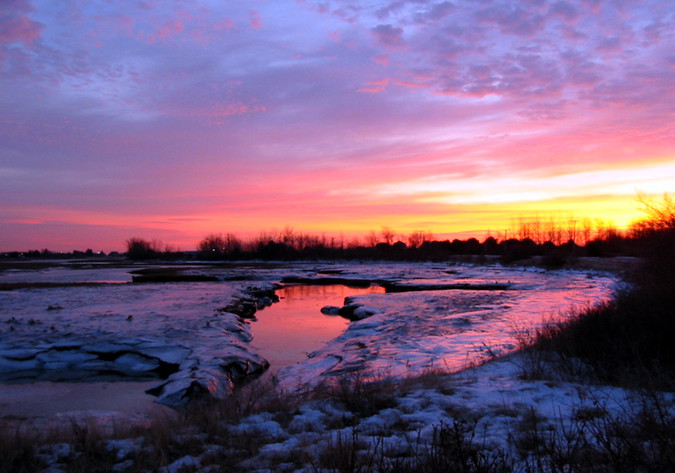The Wrack
The Wrack is the Wells Reserve blog, our collective logbook on the web.
The Wrack is the Wells Reserve blog, our collective logbook on the web.

The following was published in the Biddeford-Saco Journal Tribune Sunday edition, 3/20/2016, and Making It At Home's 3/23/2016 issue.
My wife and I and our two boys moved up to Maine full-time in July 2012. We felt like we’d arrived in the Garden of Eden. Lobsters were four bucks, the ocean was 73 degrees, and the outdoor season stretched well into November. It wasn’t the Maine I knew from my childhood (swimmable water!?), but who cared? It was awesome.
In hopes of a repeat performance this year, I’ve asked friends and neighbors and even the long-time weather monitors at the Wells Reserve at Laudholm what the preceding seasons were like prior to that epic summer of 2012. According to them, the winter of 2012 was a dud. Only 44 inches of snow fell at the Jetport, and 93% of the days in February 2012 were warmer than average. It even hit 81 degrees in March of that year.
Yes, the winter of 2012 was a mild one. But not as mild as this winter just was.
New England just concluded its warmest December-through-February period in 121 years of record-keeping. This winter came in like a lamb; it left like one too. Wasn’t this the second Christmas in a row that we saw folks out in T-shirts? Aside from this year’s Valentine’s Day [Low Temperature Record] Massacre, our normally frigid months were a bust in 2016. Spring officially arrives on March 21; why does it feel like it’s been here for a month already?
Now, granted, this time last year we were under a three feet of snow and recovering from the coldest February in 120 years of recordkeeping. But the longer term trends, over the past 30, 60, even 120 years, are all showing warmer, shorter winters. Overall, each decade is warmer than the last.
Based on our current path, the arrival of spring could be a full 21 days earlier by the year 2100. So that would be early February - blossoms for Valentine’s Day? That is definitely not the Maine I know.
Maine without a winter - what would that mean for our psyche, our identity, our seasonal economy? Will snowbirds stop flying south? (Isn’t Florida slowly slipping underwater anyway?) Will ski resorts become permanent mountain bike parks? Will deer ticks ultimately outweigh the deer?
My family and I enjoyed the Snowmageddon of 2015 for the most part (not the shoveling part). I’d like to think that we can continue to look forward to snowy winters. Snow and cold are fun, and they also make our fleeting summer that much more precious. (My sister lives in San Diego, where they seemingly have only one season. If variety be the spice of life, San Diego’s weather is Wonder Bread.)
Ice fishing also holds some appeal in the future for me too, because I’m a man, and men like to gather around things and drink beer. (If food comes out of those things, even better.) So I want to be able to go ice fishing in years to come… and ice skating… and sledding… and skiing. I don’t want to give up on winter; I don’t want winter taken away from us.
Naturally, one has to look for the thief. At first, I assumed it was the political primaries contributing more than the usual amount of hot air to the atmosphere this season, but the previous elections years of 2008 and 2004 didn’t have as warm winters as we just had.
The National Academies of Science recently put out an analysis that pins more and more of the blame for our disrupted, ever-warmer weather on human-induced climate change (a summary is available from Climate Central). According to NASA and NOAA, “The planet’s average surface temperature has risen about 1.8 degrees Fahrenheit since the late-19th century, a change largely driven by increased carbon dioxide and other human-made emissions into the atmosphere.”
So the thief is us. But maybe we’re not so much stealing the winters of our future as infecting ourselves with an illness which gradually saps the boldness from our seasons. Right now, we’re running a low-grade fever.
For what is that couple degrees NASA and NOAA claim, if not a fever? My five-year-old has a normal temperature of 98.6 degrees Fahrenheit. Adding 1.8 equals 100.4. Would I keep him home from school with a 100.4 temperature? For infants, a fever like that requires a call to the doctor, but for kids and adults, it’s more of an inconvenience, with an ambivalent diagnosis. If it goes down, it’s off to school he goes. If it goes up, it’s off to bed.
In a feverish fit, I foolishly planted some sprouting potatoes in my raised beds last weekend. Overnight killing frosts are still regularly hitting my yard in South Portland, but my thermometer read 70 degrees that Sunday and I wanted to feel some soil between my fingers again. It was marvelous.
The potatoes will likely not survive; my farmer and gardener friends will surely mock me. Looking back, I think I had spring fever. My ardor for planting has since subsided. Our planet’s fever, however, does not seem to be abating; year after year, it continues to climb.
Nik Charov is president of Laudholm Trust, the nonprofit partner of the Wells National Estuarine Research Reserve in Wells, Maine. His biweekly column, “Between Two Worlds,” ventures forth from the intersection of art and science, past and present, hot and cold. More at wellsreserve.org/twoworlds.